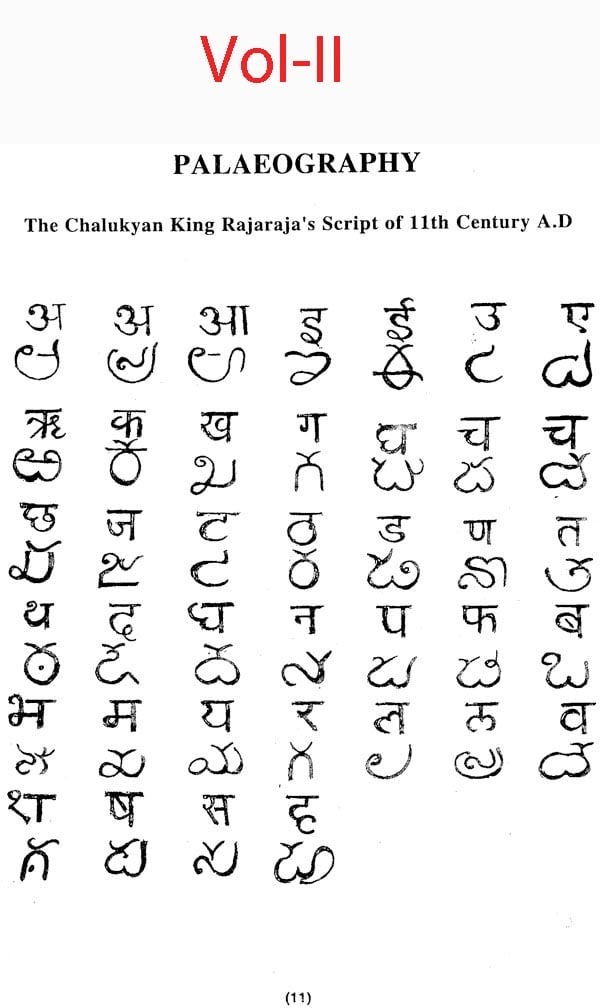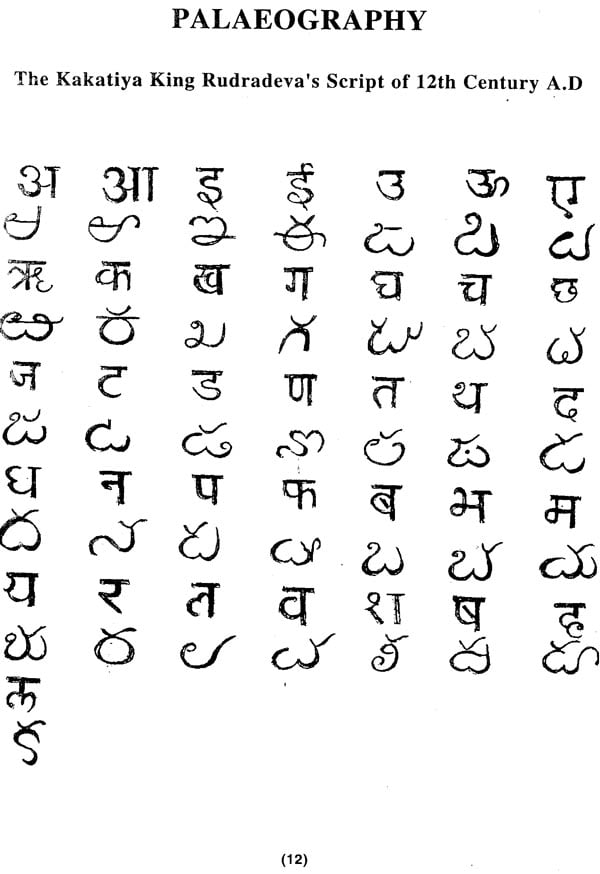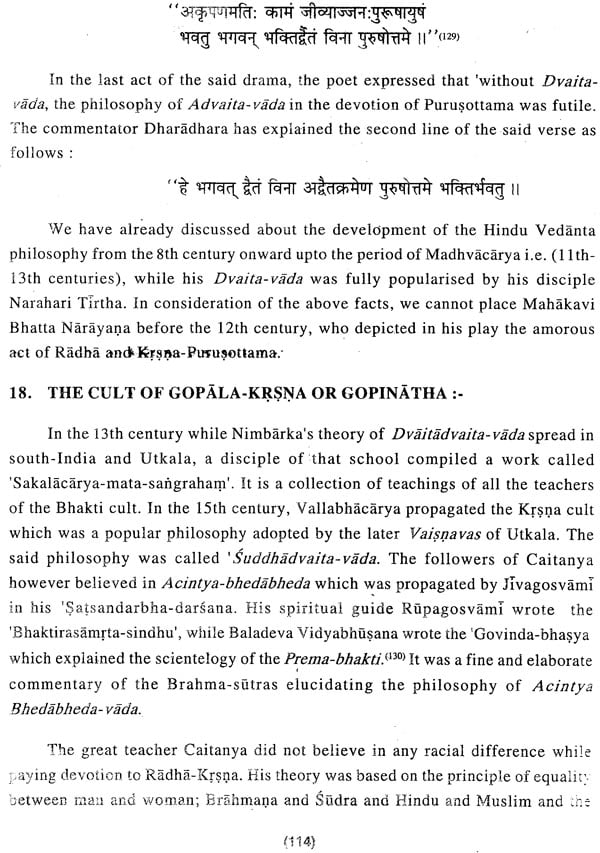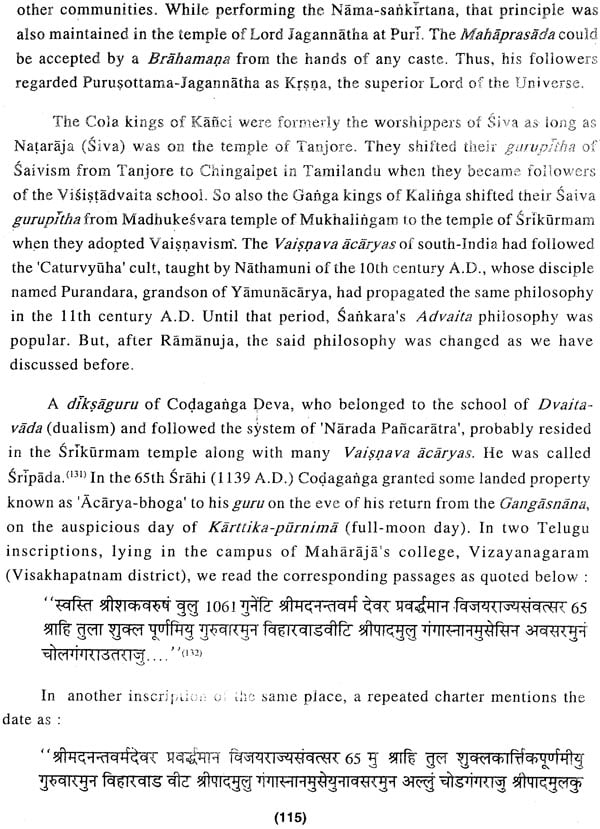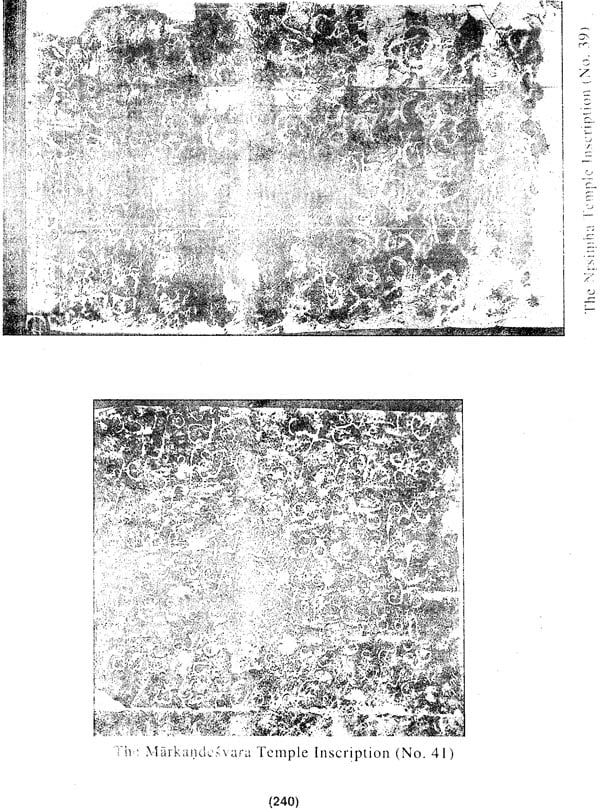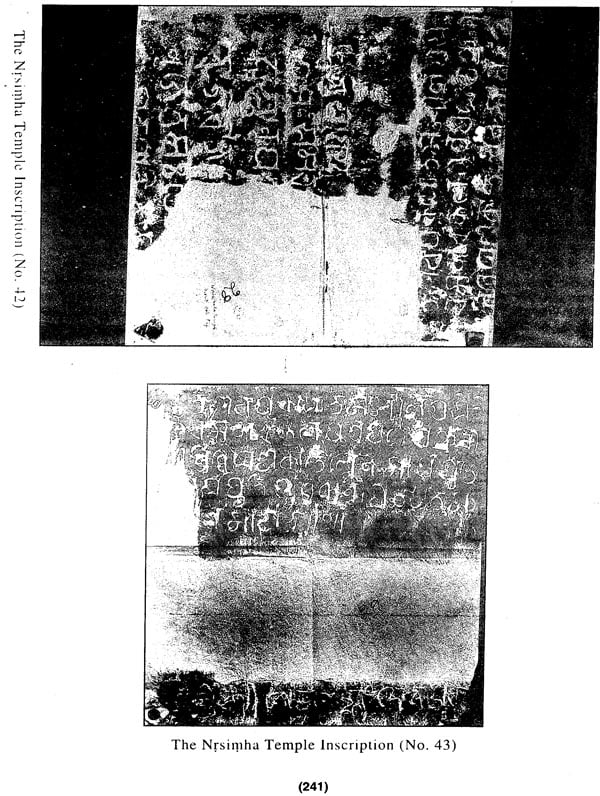Inscriptions of The Temples of Puri and Origin of Sri Purusottama Jagannath (In 2 Volumes): An Old and Rare Book | Exotic India Art (original) (raw)
From the Jacket
This work deals with some important aspects relating to the history of Lord Jagannath of Puri, Prior to this several Indian scholars and a groups of Prof. of the University of Heidelberg (Germany) have attempted to solve many difficult problems concerning the cult and the iconic features of Lord Jagannath basing on the literary and epigraphic evidences available till then. Their strenuous efforts have been rightly much appreciated. But here are some lacunae in their findings as they had no access to the recently discovered inscriptions. Quite a few of the recently discovered inscriptions of Nrusimha Temple & Some other temples of Puri Have been clearly deciphered and critically edited in this work.
This book will offer more scope to draw a correct picture of the history of Lord Jagannath & his cult.
About the Author
Dr. Satyanarayan Rajaguru was born in 1903 at Paralakhemundi (Orissa) he successfully completed the indological course of Andhra University and received the title Ubhaya large number of inscription which have been published in research journals of eminence. His first original paper was published in J.B.O.R.S. Patna in 1927.
Gists of his original articles were published in the Bibliothica Indica by the Kern Institute of Holland. His contribution in the field of epigraphy has led to substantial revision of the history of Orissa. He worked as a research scholar in the Kalinga Historical research society and as an Epigraphist cum curator of Orissa State Museum from 1947-1970 during which period he wrote the history of the Gangas , inscriptions of Orissa and the invocatory verses from inscriptions besides hundreds of articles of his have been published in various journals English, Oriya, Hindi, Sanskrit and Telugu. His contribution was well recognized by the government of India & he was awarded the title of Padmasri in 1974. the Berhampur University also honored him by awarding the D. Litt. Degree in 1975 and nominating him as a life member of the senate. He was a Visiting Prof. of the Utkala University in 1982 for a short period. The Orissa History congress in its 1980 session recorded its great appreciation for Dr. Rajaguru and described him as a source of perennial inspiration and admiration to all.
His history of Orissa in Oriya is the latest and most authentic work on the subject illustrating his scientific approach as a scholar for his great contribution in the fields of Orissan History, epigraphy and Oriya linguistics Orissa Sahtiya Akademi specially honored him on the occasion of its silver Jubilee. He has also edited jointly with Prof. Sarbeswar Das a historical drama entitled chandrakala Natika by Vishvanath kaviraja in Sanskrit Besides he has written the following significant books in Oriya.
1. Orissara Sanskrtutika Ithasa
2. Naga Ithasa
3. Orissara Sankhipta Ithasa
4. Kalingara Atmakatha
5. Oriya Lipra Krama Vikasa
6. Oriya Upadbhasha
7. Monorama Kavya
8. Radhabhisheka Natika
9. Gopabandhu Gadya Sahitya
10. Prasthava Chintamani
11. Kamata Kumari Drama
12. Janani Utkala
13. Mo Atma Jivani Etc.
Dr. Rajaguru now nearly eighty nine years old has completed this remarkable work shedding new light on the history of the famous temple of Lord Jagannath and is busy now with the second volume likely to come out soon under the patronage of Sri Jaganath Sanskrit Visvavidyalaya Shrivihar Puri.
Foreword
It gives me immense pleasure to present a competed research project of this university undertaken by Dr. S.N. Rajguru in the form of a published work. This is the first part of his research findings the second volume is under preparation and is expected to throw further light on some hitherto unknown facts of history. The research project was as a matter of fact initiated by Prof. B.K. Mohanty Ex Vice chancellor of this University and I am glad to note that now the first part has been completed and is being published for the benefit of all concerned. The posterity will I am sure remain indebted to both Dr. Rajguru for undertaking this university research project at his old age and Prof Mohanty for initiating the same. This valuable research work and its publication could be made possible because of the Hundi interest received from Sri Jagannath temple Puri for which I on my behalf and on behalf of this university express my deepest gratitude to the state Government law department and the temple administrator Shri S.K. Dashchoudhury comptroller of finance deserves my heartfelt thanks for his ungrudging cooperation in looking after the publication of this volume. My thanks are also due to Prof. J.M. Mishra for rendering necessary help in publication work. Above all it was the grace of Lord Jagannath which has made all this possible and here where words fail neither words of gratitude nor thanks would suffice.
The work in based on the study of the inscription discovered from there temples at Puri Viz. Nrsimha Markandeswara and Patalesvara temples. The findings are mentioned in a nutshell by the author in his introduction. One of the important findings for example is that an inscription from Nrsimha temple mentions the names of Balabhadra Purusottam and Subhadra and also the name of one Majakara Jayaraja who was an important officer under the king Kamarnavadeva the son and successor of Chodagariga and held the reign of administration from 1142 A.D. Dr. Rajguru therefore comes to the conclusion that the three deities Purusottama Balabhadra and Subhadra were adorened in the so called Nrsimha temple on or before 1142 A.D. it is interesting to note how this finding of Dr. Rajguru differs from that of Dr. Herman Kulke who speaks of the establishment of the present triad in 1230 A.D. in the introduction to cult of Jagannath and the regional tradition of Orissa edited by him in 1978. Dr. Rajguru points out. It is a pity however that in 1978 scholars had no information regarding the inscription of Nrsimha temple which proves that the installation of the triad was accomplished long before 1230 A.D. this historical finding has been made possible because of the study of the inscriptions of Nrsimha temple by Dr. Rajguru and it is only one of the examples which unerringly points to the important of the Univeristy research project undertaken by Dr. Rajguru.
Preface
In 1931 during my visit to Puri in some private affairs I met with the late Gajapati Raja of Puri Sri Ramachandra Dev in his palace. In course of talk with him he informed me that two broken stone slabs were discovered from a well near the temple of Goddess Vimala in the premises of Sri Jagannath temple. Both the slabs contained some inscriptions which no one could read and they were kept in the palace. Then he showed me where the stone inscriptions were kept. I had nothing then to taken estampage from them but read only a few word incised in South Indian Script attributable to the 13th century A.D. Paleographically. As the inscribed parts were not clear being broken and hidden under lime coating it was not possible to read them except the name of Rajaraj Deva a king of the imperial Ganga Dynasty.
After some years again I went to the Raja palace to prepare some estampages but the inscribed stones were not kept there. I returned in vain. From that time onward it struck to my mind that some broken parts of a temple which contained inscriptions within the compound of Sri Mandira must have been repaired and re plastered latter so that they are not yet discovered.
After some years in 1956 or 1957 I visited the Sri Mandira while that was undertaken by the Department of Archaeology of the Central Government a vital work of deplastering the main temple unexpectedly I noticed a few inscribed letters on a stone fixed at the front wall of the Nrsimha temple near Mukti Mandapa. The letters belonged to the North East Indian style of the 12th century. At that time I met with Sri Suresh Chandra Mohapatra an engineer who was deputed by the government of Orissa to watching the work for careful deplasteration. I requested him to assist me in clearing an epigraph at Nrsimha temple which he complied.
After duly cleaned I found that portion of the inscription was broken still I could read the remaining visible portion and published it in my compilation series entitled inscriptions of Orissa 3rd Volume and part I which was published by the Orissa Sahitya Academy in 1960. That attracted the attention of several scholars. After a prolonged request made through the state government to the director general of archaeological survey of India the deplastering work at Nrsimha temple near the Mukti Mandap was undertaken. After completion of the work a large number of inscriptions have come to light. But many epigraphs are found fragmented the total number being Sixty One.
At first we could not procure any permission from the concerned Department to prepare estampage of those inscriptions until the chief Minister of Orissa Sri Janaki Ballabha Patnaik had taken interest in this matter.
Contents to the First Volume
| Foreword | i | |
|---|---|---|
| Preface | iii | |
| Abbreviations | vi | |
| Part I | ||
| 1 | Introduction | 1-7 |
| 2 | Map of Puri town | 8 |
| 3 | Temples of Purushottama Dhama | 9 |
| 4 | Palaeography | 10 |
| 5 | Comparative study of Palaeography | 11 |
| 6 | The Inscription of Markandesvara Temple (No.1) | 12-14 |
| 7 | The Inscription of Nrsimha Temple (No.2) | 15-17 |
| 8 | The Inscription of Nrsimha Temple (No.3) | 18-20 |
| 9 | The Inscription of Nrsimha Temple (No.4) | 21-23 |
| 10 | The Inscription of Nrsimha Temple (No.5) | 24-26 |
| 11 | The Inscription of Nrsimha Temple (No.6) | 27-29 |
| 12 | The Inscription of Nrsimha Temple (No.7) | 30-32 |
| 13 | The Inscription of Markandesvara Temple (No.8) | 33-35 |
| 14 | The Inscription of Nrsimha Temple (No.9) | 36-38 |
| 15 | The Inscription of Markandesvara Temple (No.10) | 39-41 |
| 16 | The Inscription of Nrsimha Temple (No.11) | 42-44 |
| 17 | The Inscription of Nrsimha Temple (No.12) | 45-47 |
| 18 | The Inscription of Nrsimha Temple (No.13) | 48-50 |
| 19 | The Inscription of Nrsimha Temple (No.14) | 51-55 |
| 20 | The Inscription of Nrsimha Temple (No.15) | 56-58 |
| 21 | The Inscription of Nrsimha Temple (No.16) | 59-61 |
| 22 | The Inscription of Nrsimha Temple (No.17) | 62-64 |
| 23 | The Inscription of Markandesvara Temple (No.18) | 65-67 |
| 24 | The Inscription of Patalaesvara Temple (No.19) | 68-70 |
| 25 | The Inscription of Patalaesvara Temple (No.20) | 71-73 |
| 26 | The Inscription of Patalaesvara Temple (No.21) | 74-76 |
| 27 | The Inscription of Patalaesvara Temple (No.22) | 77-79 |
| 28 | The Inscription of Patalaesvara Temple (No.23) | 80-82 |
| 29 | The Inscription of Nrsimha Temple (No.24) | 83-85 |
| 30 | The Inscription of Patalaesvara Temple (No.25) | 86-88 |
| 31 | The Inscription of Gopinatha Temple (No.26) | 89-91 |
| 32 | The Inscription of Patalaesvara Temple (No.27) | 92-94 |
| Part II | ||
| 33 | Puri the ancient seat of Lord Sripurushottama | 95-96 |
| 34 | King Yayati the builder of Nrsimha Temple | 96-100 |
| 35 | Transfer of Sripurushottama to another Temple | 100-101 |
| 36 | Chodaganga’s enterprise in political and religious affairs | 102-107 |
| 37 | Original construction of the Nrsimha Temple | 107-108 |
| 38 | Consecration of the Temple of Sripurushottama | 108-115 |
| 39 | The anthropoid stone images of trinity into anthropomorphized form | 115-121 |
| 40 | Reforms of Narasimhadev I in administration of Purushottama temple | 121-123 |
| 41 | Political condition of Utkal before Anangabhimadev III | 123-125 |
| 42 | Importance of the Inscription of the Temples of Puri | 125-129 |
| 43 | Muslims of Bengal checked by Narasimhadev | 129-131 |
| 44 | The Influence of Srivaisnavism and religious concept in Utkala | 131-135 |
| 45 | Simultaneous influence of Buddhism | 135-137 |
| 46 | The Coinage and measure during Ganga regime | 137-143 |
| 47 | The Muslim invasion of Bengal and the savara’s participation in Utkal Militia and their services in the temple of Purushottama at Puri | 143-147 |
| 48 | Sadhu Jayadeva the author of Gita govinda | 148-149 |
| 49 | The script & language used in the inscription and their writers | 149-158 |
| 50 | Index | 198-200 |
| 51 | Bibliography | 221-224 |
Contents to the Second Volume
| Part I | 3 | |
|---|---|---|
| Introduction | 11 | |
| Palaeography | 11 | |
| Transliteration Table | 14 | |
| 1 | The Markandesvara Temple Inscription (No.28) | 15 |
| 2 | The Markandesvara Temple Inscription (No.29) | 16 |
| 3 | The Nrsimha Temple Inscription (No.30) | 19 |
| 4 | The Nrsimha Temple Inscription (No.31) | 20 |
| 5 | The Nrsimha Temple Inscription (No.32) | 21 |
| 6 | The Nrsimha Temple Inscription (No.33) | 22 |
| 7 | The Nrsimha Temple Inscription (No.34) | 24 |
| 8 | The Nrsimha Temple Inscription (No.35) | 25 |
| 9 | The Markandesvara Temple Inscription (No. 36) | 26 |
| 10 | The Nrsimha Temple Inscription (No.37) | 27 |
| 11 | The Nrsimha Temple Inscription (No.38) | 28 |
| 12 | The Nrsimha Temple Inscription (No.39) | 29 |
| 13 | The Nrsimha Temple Inscription (No.40) | 30 |
| 14 | The Markandesvara Temple Inscription (No. 41) | 31 |
| 15 | The Nrsimha Temple Inscription (No.42) | 32 |
| 16 | The Nrsimha Temple Inscription (No.43) | 34 |
| 17 | The Nrsimha Temple Inscription (No.44) | 36 |
| 18 | The Nrsimha Temple Inscription (No.45) | 38 |
| 19 | The Patalesvara Tempel Inscription (No. 46) | 40 |
| 20 | Lord Jagannatha Temple western Gate Inscription (No. 47) | 42 |
| 21 | Lord Jagannatha temple (Mini Model) Inscription (No. 48) | 44 |
| 22 | Lord Jagannatha Temple Inscription (No.49) | 46 |
| 23 | The Gopala Krsna Temple Inscription (No.50) | 48 |
| 24 | The Nrsimha Temple Inscription (No.51) | 49 |
| 25 | The Markandesvara temple Inscription (No. 52) | 50 |
| 26 | The Panca Pandava Temple Inscription (No. 53) | 52 |
| Part II | ||
| 1 | The Early Stage of Vaisnavism in Kalinga | 55 |
| 2 | The Sailobhavas of Kongada and Sri Ksetra | 57 |
| 3 | History of Jainims and Buddhism in Kalinga before Christ | 58 |
| 4 | The Kusan Rule in Kalinga | 60 |
| 5 | The Sakas and Resurrection of Buddhism | 61 |
| 6 | Revival of Hinduism and the worship of Narayana | 63 |
| 7 | The Nagas and Guptas of Kalinga | 65 |
| 8 | The Candra Kings of Indian Archipalago | 67 |
| 9 | Events of the Time of the later Guptas and Saijobhavas | 69 |
| 10 | Contact of Utkala with Indonesia | 73 |
| 11 | Revival of Buddhism in Utkala | 76 |
| 12 | Worship of the four armed visnu | 78 |
| 13 | The Icon of Visnu (Purusottama) | 83 |
| 14 | Sri Purusottama Jagannatha’s Srahi or Anka Years | 94 |
| 15 | The Iconic feature of Visnu by the later Bhanja kings | 97 |
| 16 | The Neo Tantric philosophy in Utkala | 100 |
| 17 | The Development of Philosophy and the Cult of Lord Jagannatha | 106 |
| 18 | The Cult of Gopal Krsna or gopinatha | 114 |
| 19 | The Mathas of Puri | 120 |
| 20 | The Temple of Sri Jagannatha at Puri | 123 |
| 21 | Administration of the Temple of Lord Jagannatha | 127 |
| 22 | A New Rajaniti in Utkala’s administration | 129 |
| 23 | The Fight with the muslim kings | 136 |
| 24 | The Suryavamsi kings of Utkala | 141 |
| 25 | After Utkala Lost its independence | 147 |
| 26 | The Festival of Lord Jagannatha | 149 |
| 27 | The Netrotsava and car festival of Lord Jagannatha | 159 |
| 28 | The Mahaprasada | 165 |
| Appendix | ||
| 1 | Property of Jagannatha Temple Puri | |
| 2 | Madala Panji (Temple Chronicles) of Puri A Reassessment of the evidence | 211 |
| Illustrations | 233 | |
| Index | 257 |
Sample Pages
Vol-I


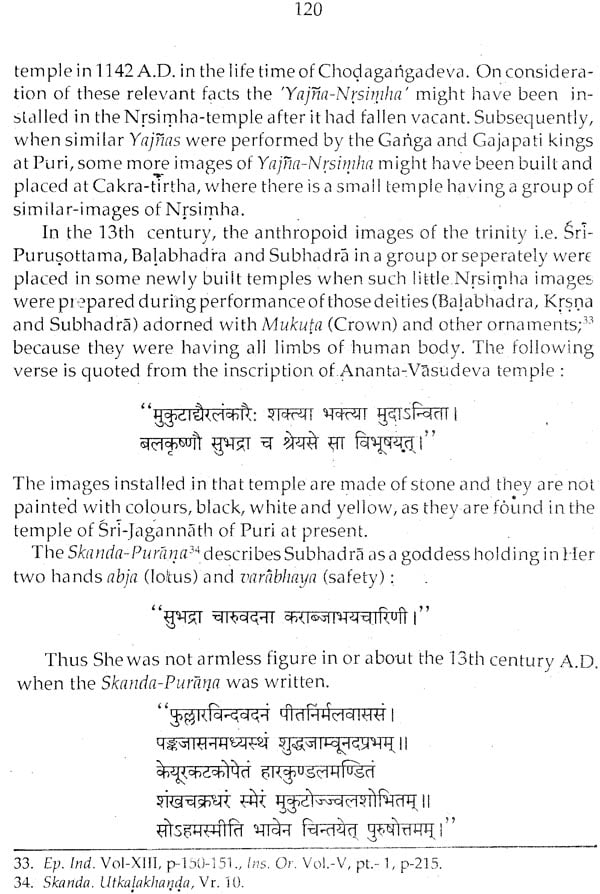


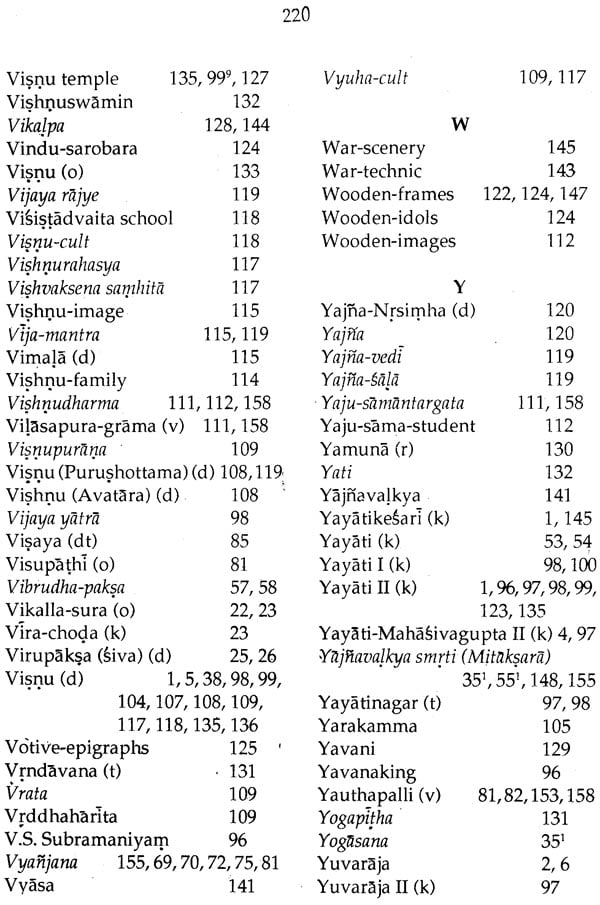
Vol-II
